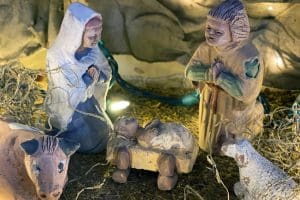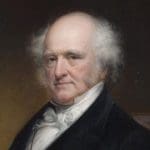![]()
Archaeology and Prehistoric Religions
By Daniel C. Peterson and William J. Hamblin
Historians define the distinction between prehistoric and historic societies based on the existence (or nonexistence) of writing. Human communities with written records are said to be historic; those without writing are prehistoric. According to this definition, some human communities remained “prehistoric”-without writing-until the nineteenth or even twentieth centuries. Religions of prehistoric peoples are often called “primitive,” not in the derogatory sense of “undeveloped” or “unsophisticated,” but meaning “very ancient” or “primeval.”
Written texts are crucial to the study of religions. They provide the fundamental avenue to understanding the beliefs, practices, and history of religious movements. Indeed, one of the most important ways many religions describe themselves is by their communal acceptance of scripture, books they consider to be definitively sacred.
When the earliest surviving fragmentary religious texts appear among the Sumerians and Egyptians around 3000 B.C., there is evidence that their religious practices and beliefs already had a long history. The oldest book in the world, the Pyramid Texts of Egypt, contains references to ideas and practices that were already so ancient that they were apparently no longer fully understood by the priests who inscribed them on tomb walls around 2350 B.C.
Many other ancient religions have left little or no written evidence of their beliefs. Historians turn to archaeologists for help in understanding these prehistoric religions. Archaeological evidence of interest to the historian of religions can be divided into three broad categories: burials, sacred monuments and religious art. Although none of these types of evidence can provide us with a full understanding of prehistoric religions, each gives us additional insight into the religious beliefs of early humans.
Archaeological Evidences
Burials-ritual attempts to memorialize, protect, or preserve a corpse-are generally understood by archaeologists as indicating a belief in life after death. Prehistoric peoples often buried their dead in communal or family burial areas in specially protected or constructed tombs with a supply of clothing, food, tools and other valuable objects. Indeed, some royal or elite prehistoric tombs seem to have included the ritual sacrifice and burial of servants, guards, or wives whose souls were apparently expected to accompany and serve the ruler in the afterlife. Some prehistoric tombs are large monuments that seem to have become family or community shrines, where the spirits of the ancestors were honored or worshiped for generations.
Tombs were not the only form of prehistoric monumental religious building. Most ancient sacred buildings were undoubtedly made of wood, and have long since disappeared. The most striking survivals of prehistoric religious sanctuaries are megalithic (“large stone”) monuments. These monuments often include mounds of earth serving as temple platforms, large raised stones, and frequently the alignment of a series of raised stones in circles or other patterns. The Bible describes the early Israelites as erecting megalithic monuments as part of their religion (Ex. 24:4; Josh. 4:19-24; 1 Kg. 18:31). Although the details are unclear, almost all megalithic monuments are thought to have had religious functions. The most famous megalithic religious monument is Stonehenge in England, a huge circle of standing stones constructed in phases from roughly 3000 to 1000 B.C. Stonehenge is thought to have served in part as an archaic astronomical observatory used to establish the summer solstice and other days of a sacred calendar.
The art of prehistoric peoples is another invaluable source for understanding their religious beliefs. The splendid cave art from Lascaux, Altamira, and many other Neolithic sites contains representations of religious beliefs and practices focusing on animals and the hunt. Another major theme of prehistoric religious art was fertility. Images of gods, goddesses, or divine ancestors are widespread in prehistoric statues and paintings.
Although the details of prehistoric religion are often obscure, archaeology provides evidence that religion has always existed in human communities; religious belief seems to be a fundamental part of human nature.
Further Reading: Brian Fagan, From Black Land to Fifth Sun: the Science of Sacred Sites (Reading, MA: Perseus Books, 1998).

















